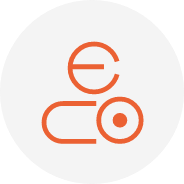Automatic vs. Manual Tightening: Key Differences
Bolted joints are the most common detachable connections in machinery. They are simple, reliable and easy to service, so mastering the tightening process is critical to product quality. Tightening technology falls into two broad categories: automatic tightening and manual tightening (an operator using a handheld electric tool).
Automatic Tightening
When the part reaches the station, an automated device (usually a robot or dedicated tightening machine) carries a high-precision electric screwdriver to the bolt. A PLC sends the start signal; the screwdriver follows a pre-programmed torque/angle strategy, then backs out and moves to the next bolt along a pre-defined path.

Challenges
• Requires high and repeatable part/fixture accuracy; poor locating leads to low “nut-finding” success.
Advantages
• Reduces labor, removes human variability.
• High accuracy and consistency, short cycle times.
• Modular control, strong EMI immunity, easy programming.
• Built-in error detection, alarms and diagnostic logs simplify troubleshooting.
Manual Tightening
An operator positions a handheld electric screwdriver on the bolt, finds the thread start, then triggers the tool until the programmed torque is reached. To offset tool weight and reaction torque, the screwdriver is normally suspended on a balancer.

Automatic vs. Manual — Key Contrasts
Footprint
Automatic systems are larger; retro-fitting a line may be needed. Manual tools are compact and drop into existing cells.
Cost
Automatic cells often cost hundreds of thousands RMB; manual tools are an order of magnitude cheaper.
Throughput
Automatic ≈ 1 cell replaces 5 skilled operators.
Manual ≈ 1 tool replaces 3 skilled operators.
Conclusion
Choose the method that best matches part geometry, cell layout and throughput targets to guarantee quality and boost competitiveness.












